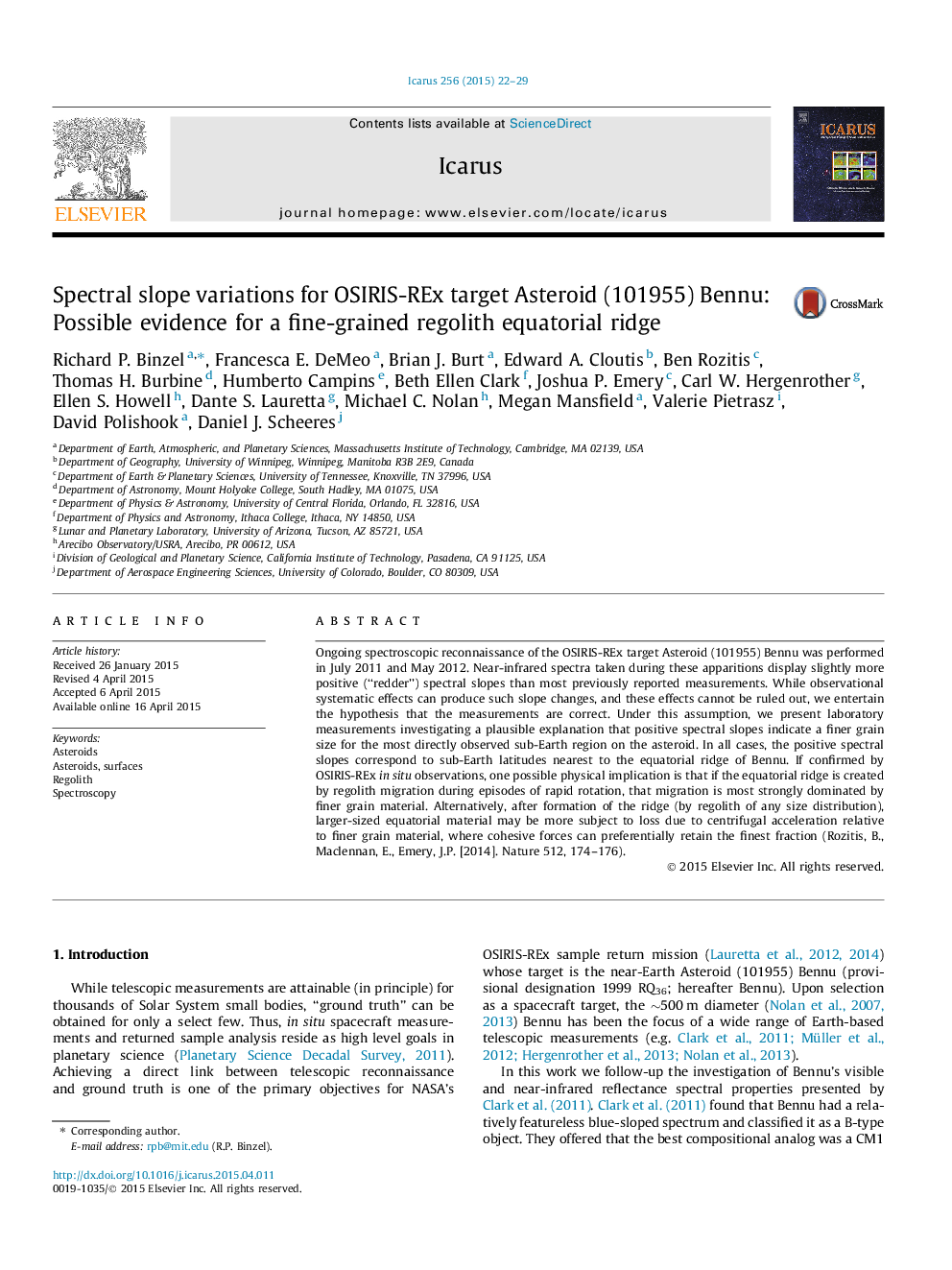| Article ID | Journal | Published Year | Pages | File Type |
|---|---|---|---|---|
| 1773032 | Icarus | 2015 | 8 Pages |
•New spectral measurements are reported for OSIRIS-REx target Asteroid (101955) Bennu.•Some evidence is presented for a difference in measured spectral slope at the equator.•One speculation is that finer-grained regolith is preferentially retained near the equator.
Ongoing spectroscopic reconnaissance of the OSIRIS-REx target Asteroid (101955) Bennu was performed in July 2011 and May 2012. Near-infrared spectra taken during these apparitions display slightly more positive (“redder”) spectral slopes than most previously reported measurements. While observational systematic effects can produce such slope changes, and these effects cannot be ruled out, we entertain the hypothesis that the measurements are correct. Under this assumption, we present laboratory measurements investigating a plausible explanation that positive spectral slopes indicate a finer grain size for the most directly observed sub-Earth region on the asteroid. In all cases, the positive spectral slopes correspond to sub-Earth latitudes nearest to the equatorial ridge of Bennu. If confirmed by OSIRIS-REx in situ observations, one possible physical implication is that if the equatorial ridge is created by regolith migration during episodes of rapid rotation, that migration is most strongly dominated by finer grain material. Alternatively, after formation of the ridge (by regolith of any size distribution), larger-sized equatorial material may be more subject to loss due to centrifugal acceleration relative to finer grain material, where cohesive forces can preferentially retain the finest fraction (Rozitis, B., Maclennan, E., Emery, J.P. [2014]. Nature 512, 174–176).
